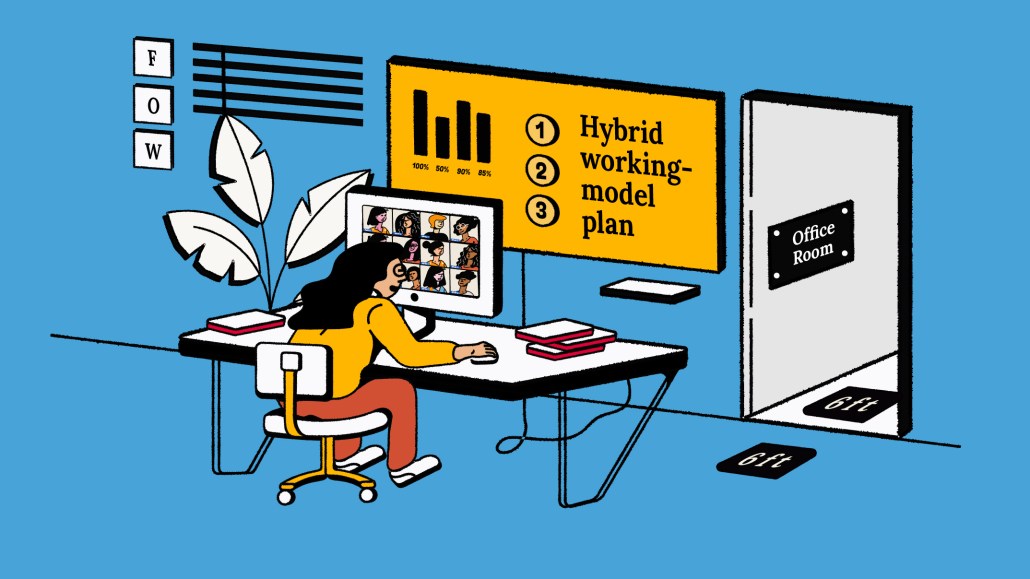‘The sky’s the limit’: How Girls Who Code is using digital experiences to expand its reach

The past two years of the global pandemic have all but shuttered in-person events, pushing brands like Girls Who Code to hybrid or totally virtual spaces to connect with their audiences.
As pandemic lockdown kept many in their homes with surging screen time, the nearly 10-year-old nonprofit organization that works to closer the gender gap in tech and computer science, wanted to expand in digital spaces, investing more in social media, ramping up its email newsletters and online immersive experiences.
“We had been a really in-person culture, having in-person events in local communities, [and] in-person programming,” said Ashley Gramby, senior director of marketing and communications at Girls Who Code. “When we found we couldn’t do that, we switched totally to being really focused to being online.”
That’s also reflected in the marketing strategy as most of Girls Who Code’s campaigns are social-first to reach the brand’s core demographic of girls and young women between the ages of 13 and 24, per Gramby. At present, Gramby says Girls Who Code has a primary focus on organic social growth, leveraging Instagram and video content on YouTube with some testing with TikTok. Currently, the organization is running ads for its Summer Immersion Program, a virtual intro to computer science, according to Facebook ad library.
In December, the nonprofit launched DojaCode, a codable music video with pop sensation Doja Cat, digital experiences agency Active Theory and creative agency Mojo Supermarket. Within the first week of the video going live, more than 150,000 people coded the video.
DojaCode is what Gramby calls Girls Who Code’s “first foray into doing a microverse or metaverse type of interaction,” a space that has become increasingly important among brands from American Eagle to Disney looking to capture the attention of digital audiences.
“In terms of digital experiences, this shows us that the sky’s the limit in terms of what we can do and what’s possible,” she added. “We’ve definitely seen our reach expand now that we’ve focused on this digital universe experience.”
It’s unclear how Girls Who Code spends its media dollars as Gramby did not respond to a request for those figures in time for publication. Last year, Girls Who Code spent $12,295 on media, according to Kantar. Those figures do not include social media as Kantar does not track those numbers.
In leveraging the digital community and immersive experiences, Girls Who Code is headed in the right direction, according to Amber Kazalbash, associate strategy director at R/GA in Austin.
“Moving forward as Web3 becomes more embedded in our daily life, we can expect this formula to work even harder for the brand’s upcoming activations,” Kazalbash said in an email.
Karen Piper, director of strategy at GROW digital agency added that interactive, community-building digital experiences have shown their value over the course of the pandemic, and is a trend that’s likely here to stay.
“[The digital experience] just opens up these opportunities for brands to build differently for audiences than they had in the past,” she said. “The idea of the metaverse being simply a persistent virtual immersive experience is what it should be right now and what brands are largely doing.”
At the moment, Gramby says Girls Who Code hopes to return to some in-person activities and create more hybrid experiences than pre-pandemic.
“We know that when you’re learning something for the first time, sometimes that high-touch, in-person opportunity is something that helps things stick,” she said. “We’re really hopeful that things will allow us to do some more hybrid events in 2022.”
More in Marketing

In the marketing world, anime is following in the footsteps of gaming
As marketers look to take advantage of anime’s entry into the zeitgeist, they might be wise to observe the parallels between the evolution of anime as a marketing channel and the ways brands have learned to better leverage gaming in recent years.

With the introduction of video ads and e-commerce, Roblox looks to attain platform status
Roblox is expanding into more areas than just ads in 2024. Much like platforms such as Amazon and Facebook have transcended their origins to evolve from their origins as online marketplaces and social media channels, Roblox is in the midst of a transformation into a platform for all elements of users’ virtual lives.

PepsiCo wants to remain a ‘driver of culture’ as it turns to influencers and activations amid rebrand
The soda-maker says it can translate cultural relevance into sales volume.
Ad position: web_bfu




